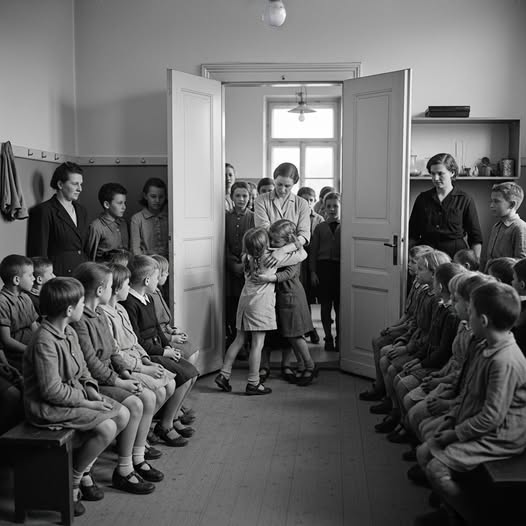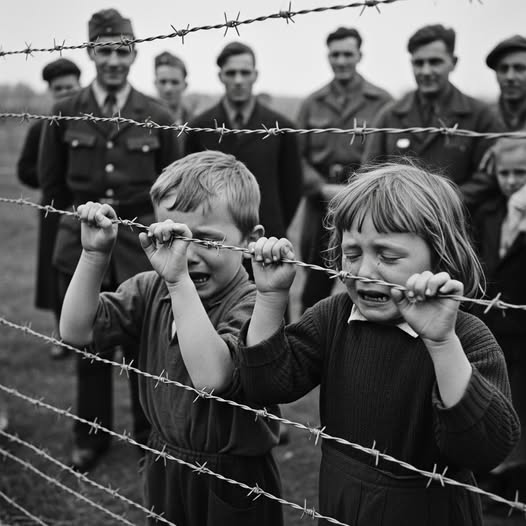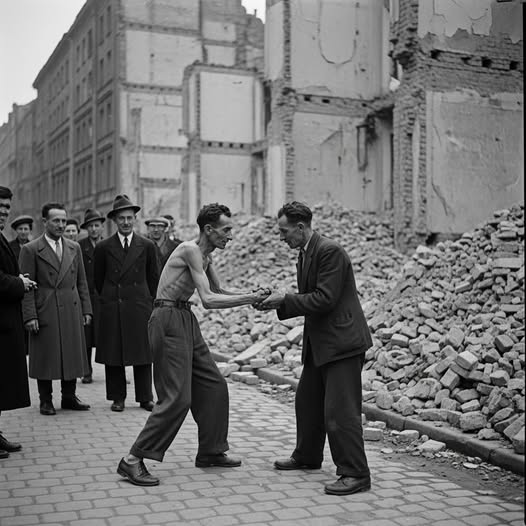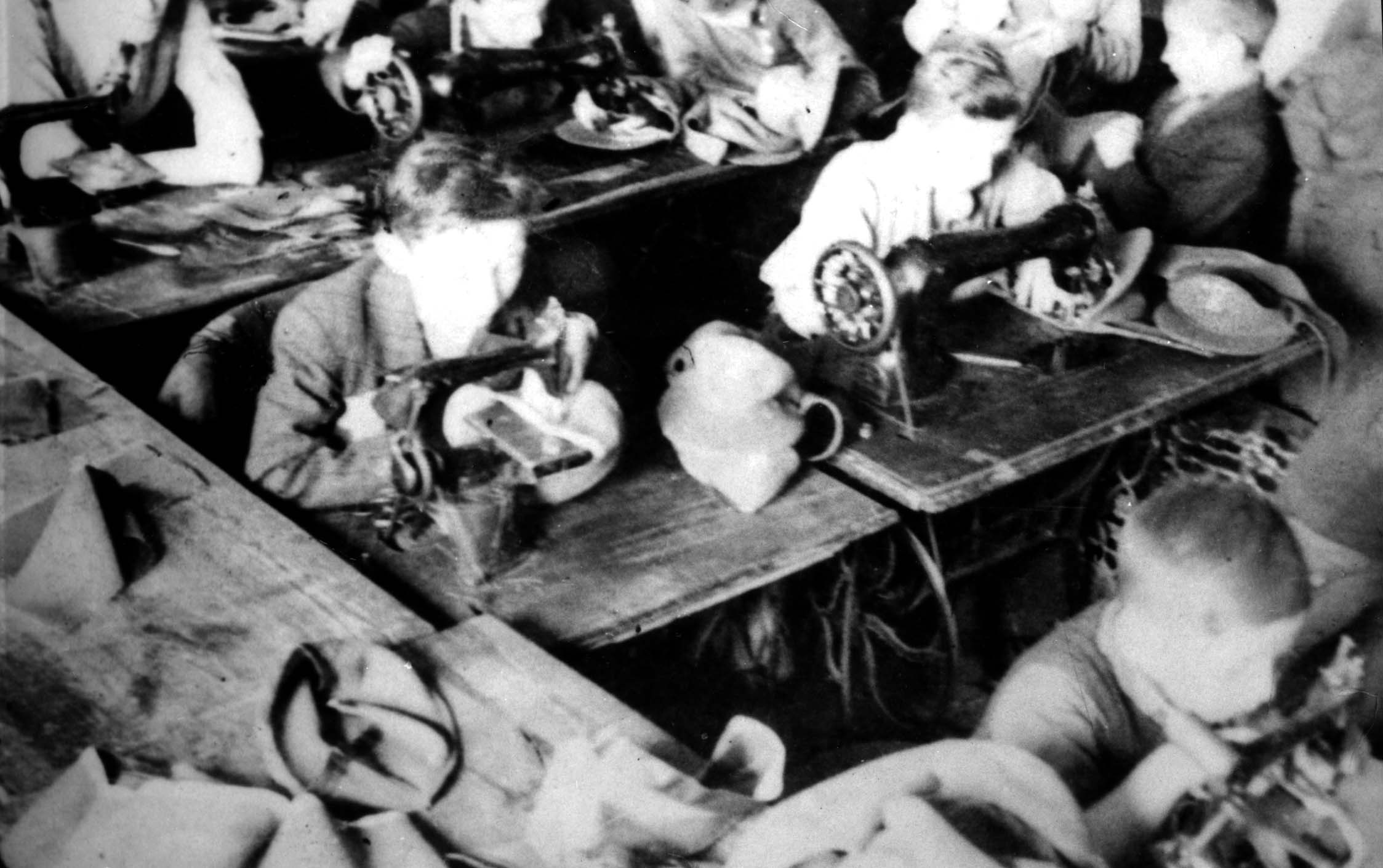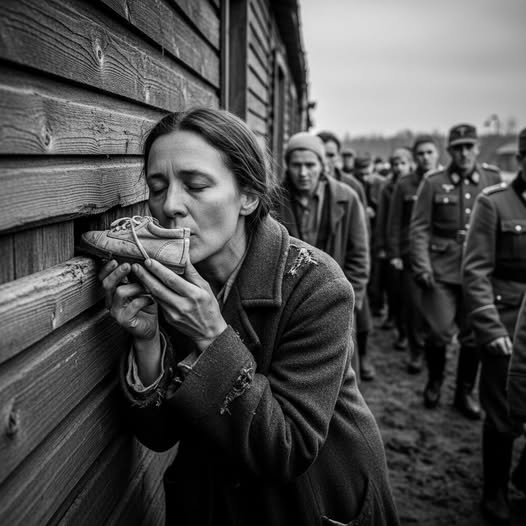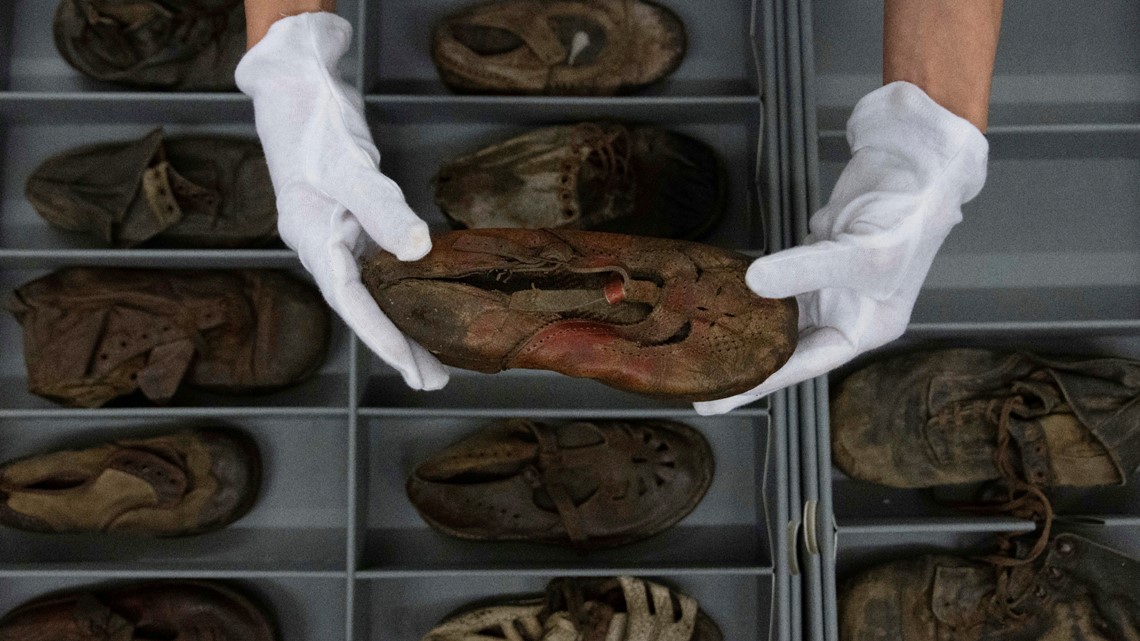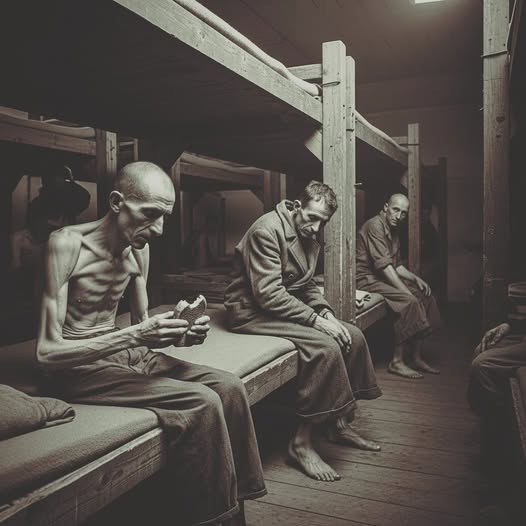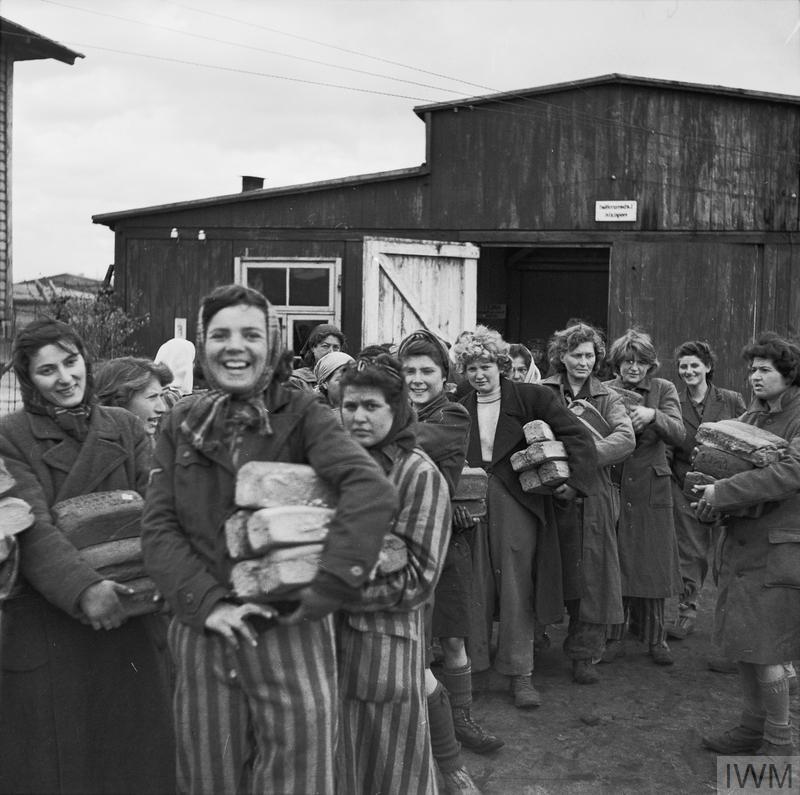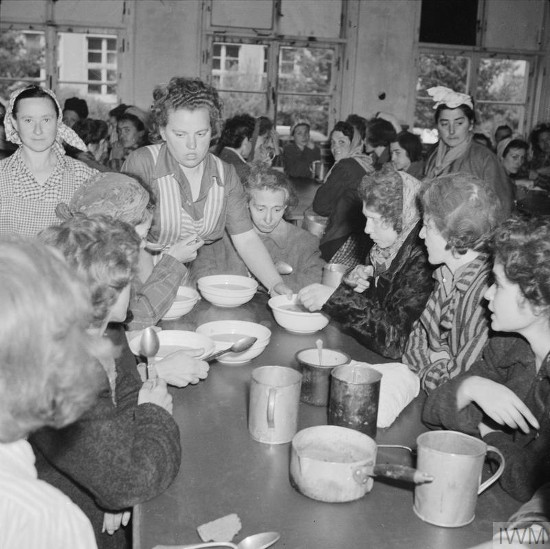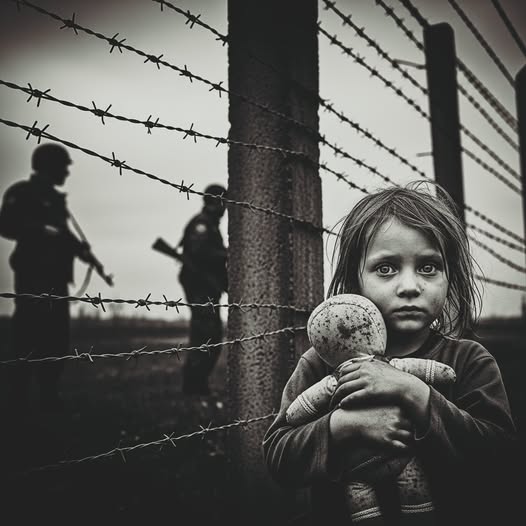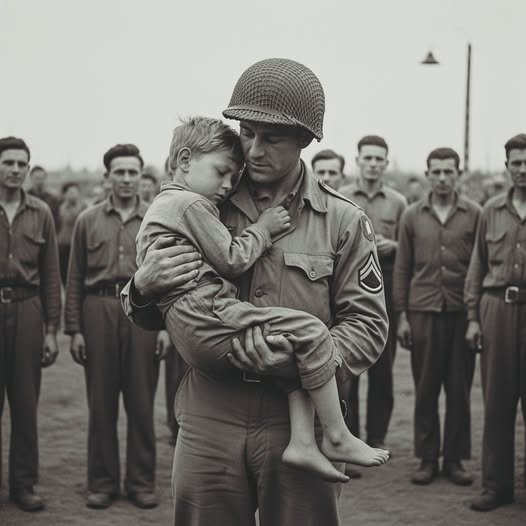The Forbidden Reunion: Two Sisters in the Shadow of the Post-War Era
In October 1945, Prague still bore the scars of war. The walls were gutted, the streets with shattered cobblestones, the air saturated with dust and silence. In a former school building hastily converted into a children’s home, dozens of orphans waited, sitting in rows on wooden benches. Their gazes seemed to float in space, as if each pupil were a mirror of the hell they had experienced. No one spoke, and yet every breath seemed laden with a held-back cry. Behind these walls, some said the war was not yet over. But no one dared to say why.
At the back of the room, a little blonde girl stared at the floor. Her name was Klara, and she no longer had any clear memories of her family. Her days passed in silent expectation, her nights in fear of the nightmares that kept returning. And yet, that morning, a distant voice echoed in the hallway, clear and fragile, a voice she would have recognized among a thousand. It was impossible, she told herself, and yet her heart began to beat faster. The mystery of that voice would shake the entire room.
The door opened. In the frame stood a gaunt figure, wearing a gray dress too big for her body. Her sunken cheeks betrayed deprivation, but her eyes… her eyes were the same as in the memories. Anna, Klara’s older sister. She had disappeared during a roundup in 1943, and everyone believed her to have died in a concentration camp. And yet, there she was, standing, alive, trembling. The children turned, as if witnessing a miracle they dared not understand. Some said she still bore the invisible marks of the barbed wire on her hands.
Klara didn’t hesitate. She jumped off the bench, her bare feet hitting the floor, her thin body running toward the door. Tears blurred her vision, but she didn’t slow down. In that suspended moment, time seemed to stand still. Two figures, two children stolen by the war, threw themselves into each other’s arms. They clung to each other as if the whole world could still tear them away. Around them, the silence grew heavier, laden with respect and pain. Yet some whispered that they weren’t the only survivors carrying a secret.
The teachers, impassive until then, looked away, their eyes moist. For they knew that behind every reunion hid a darker story: that of the missing who would never return. In the room, other children watched the scene, their gazes jealous, admiring, or simply empty. For them, this miracle would never happen. But some, more attentive, noticed that Anna wore a small, dented silver medal around her neck, like a vestige of a story she would not yet tell.
In the following days, the two sisters remained inseparable. Klara talked incessantly, as if making up for lost time, while Anna listened silently. Her eyes sometimes darkened, as if an invisible burden still weighed on her shoulders. She said nothing about her camp, her months of silence, her nights counting the guards’ steps. Yet, every time the sound of boots echoed in the street, she jumped. Some children whispered that she had seen things no one should ever see.
In postwar Prague, stories of reunions mingled with stories of absences. Thousands of children still wandered, displaced, lost, forgotten. Makeshift shelters became sanctuaries of memory and pain. There was talk of blended families, of sisters reunited, but also of those who never returned. The name Auschwitz circulated in hushed tones, like a forbidden word, laden with ghosts. And yet, behind these reunions, another mystery remained: why was Anna the only one from her convoy to return?
One evening, as Klara fell asleep beside her, Anna whispered a few words. She spoke of a woman she had met in the camp, a stranger who had given her a piece of bread, a name, a hope. She did not reveal her identity, but only said, “It’s thanks to her that I’m here.” Then she fell silent. No one ever knew who this woman was, or if she survived. But Anna kept her memory like a secret key, a talisman. Perhaps one day she would tell the story.
Klara and Anna’s reunion became a symbol in the Prague home. The other children, deprived of their families, clung to this story as proof that all was not lost. The teachers themselves spoke of this moment as a sign: life could still conquer death. But behind every smile, behind every embrace, a shadow hung: the war had not only destroyed cities, it had fractured souls. And no one could erase these fractures.
So, in that room with its wooden benches, a larger truth emerged, invisible but omnipresent. The sisters had found each other again, but behind their joy hid the memory of those who were absent, those whose names would never be spoken. In the silence of their nights, the ghosts continued to walk. The story of Prague in 1945 was not just that of an embrace, but of a broken world still trying to put itself back together. And perhaps, deep within that embrace, an even greater secret lay dormant, waiting to be revealed.
Note: Some content was generated using AI tools (ChatGPT) and edited by the author for creativity and suitability for historical illustration purposes.
